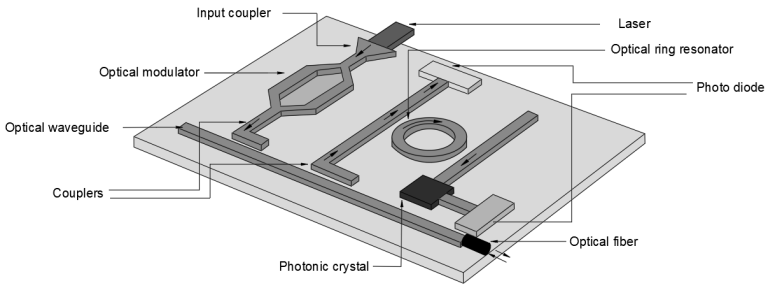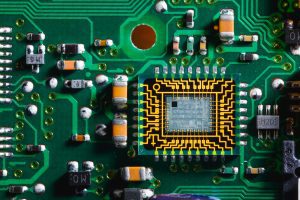Key Takeaways
- Silicon photonics leverages light to transmit quantum information with low loss, minimal noise, and high scalability.
- It enables dense, room-temperature quantum interconnects, integrates with classical CMOS logic, and supports photonic quantum computing architectures.
- Compared to traditional electronics, photonics offers greater bandwidth, lower energy consumption, and better signal fidelity.
- While challenges like scalable photon sources remain, silicon photonics is positioned as a critical enabler for building practical, scalable quantum computers and networks.
Silicon Photonics 101: Why Light is the Future of Quantum Computing
Quantum computing is poised to redefine computing power, promising breakthroughs in cryptography, drug discovery, artificial intelligence, and complex simulations. But scaling quantum systems to thousands—or millions—of qubits remains one of the biggest challenges in tech.
This is where silicon photonics comes in. By using light instead of electrons to transmit and process information, silicon photonics could unlock the scalability and efficiency quantum computing needs. In this guide, we’ll explain what silicon photonics is, why it matters, and how it could shape the future of quantum processors.
What is Silicon Photonics?
Silicon photonics is the technology of integrating photon-based components onto silicon chips. Instead of relying on electrical signals, these chips guide and manipulate light (photons) through tiny optical circuits.
Key benefits of silicon photonics include:
- High bandwidth – light can carry vastly more information than electrons.
- Low energy loss – photons do not produce resistive heating.
- Parallel processing – multiple wavelengths of light can share a single channel.
- CMOS compatibility – it leverages existing semiconductor manufacturing processes.
Because it combines the scalability of silicon with the advantages of optics, silicon photonics is already transforming data centers, telecom, and AI accelerators—and now it’s set to do the same for quantum computing.

Why Quantum Computing Needs Silicon Photonics
Quantum computing faces three major scaling challenges: noise, interconnect bottlenecks, and cooling requirements. Photonics directly addresses these barriers.
- Low-Noise Qubit Transmission
Photons interact minimally with their environment, reducing decoherence and enabling long-distance quantum communication. - Scalable Interconnects for Quantum Chips
Electrical wiring cannot efficiently connect thousands of qubits. Optical waveguides offer dense, low-loss quantum interconnects, even across multiple chips. - Room-Temperature Operation
Many photonic systems can work at room temperature, reducing reliance on cryogenics in hybrid quantum systems. - Integration with Classical Electronics
Since silicon photonics is CMOS-compatible, it can integrate quantum photonic devices with classical control logic and error correction circuits.
Applications of Silicon Photonics in Quantum Computing
Silicon photonics is not just theoretical—it’s already being deployed in multiple quantum technology domains:
- Photonic Quantum Computers – where quantum information is encoded directly in photons, manipulated through waveguides, phase shifters, and detectors.
- Quantum Interconnects – photons act as “flying qubits,” linking modular quantum processors into scalable architectures.
- Quantum Networks & Communication – compact, efficient chips enable quantum key distribution (QKD) for secure communications.

Challenges of Photonics in Quantum Systems
Despite the promise, scaling silicon photonics for quantum faces hurdles:
- Single-Photon Sources: Generating indistinguishable, on-demand photons at scale is still difficult.
- Chip Integration: Merging optics with electronics introduces thermal and fabrication complexities.
- Error Correction: Even with photonics, quantum error correction remains resource-intensive.
Comparison: Electronics vs. Photonics
Understanding why silicon photonics is a breakthrough becomes clearer when we compare it directly with traditional electronics.
⚡ Data Comparison Table: Electronics vs. Photonics in Computing
Feature | Electronics (Copper-Based) | Photonics (Light-Based) | Advantage |
Signal Carrier | Electrons | Photons (light particles) | Photonics – faster and interference-free |
Transmission Medium | Copper wires or metal interconnects | Optical waveguides or fibers | Photonics – higher density and distance |
Bandwidth Capacity | Limited (~GHz range) | Extremely high (~THz range) | Photonics – vastly greater bandwidth |
Energy Efficiency | High resistive losses, generates heat | Minimal loss, no resistive heating | Photonics – lower power consumption |
Scalability | Limited by crosstalk and heat dissipation | Easily parallelized via wavelength-division multiplexing | Photonics – better scalability |
Data Speed | Electrical signal (~10⁸ m/s) | Speed of light in medium (~2×10⁸ m/s) | Photonics – faster signal propagation |
Noise Susceptibility | High (EM interference) | Very low (weak photon interaction) | Photonics – improved signal fidelity |
Integration with CMOS | Mature, standard fabrication | Increasingly compatible via silicon photonics | Tie – both CMOS integrated |
Cooling Requirements | Requires significant cooling | Often operates at room temperature | Photonics – reduced cooling overhead |
Use in Quantum Computing | Limited – noise and wiring constraints | Ideal – low-noise qubit links and scalable networks | Photonics – key to quantum scalability |
The Future of Quantum Computing is Photonic
From fiber optics replacing copper in the internet to lasers driving modern data storage, history shows that light consistently outpaces electrons. Quantum computing may follow the same path.
With its combination of scalability, energy efficiency, and CMOS compatibility, silicon photonics is emerging as a foundation for future quantum computers, secure quantum communication, and large-scale quantum networks.
In short, the next revolution in quantum computing may not just be quantum—it will be photonic.
Related Content
GREAT ARTICLE!
Share this article to gain insights from your connections!







